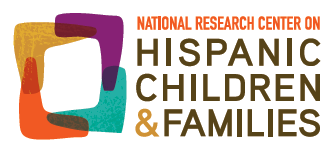A new analysis from Child Trends finds that, from federal fiscal year (FFY) 2018 to FFY 2021, the use of relative foster care placements for American Indian and Alaska Native (AIAN) children in foster care grew in seven of the … Read More
Child Well-Being

Trauma-Focused Practice Supplement for the Crossover Youth Practice Model
THE CROSSOVER YOUTH PRACTICE MODEL (CYPM) The Center for Juvenile Justice Reform (CJJR) designed the CYPM to improve multi-system collaboration on behalf of crossover youth and their families and inspire practice and policy changes aimed at better meeting their needs. … Read More

Predisposing, Enabling, and Need Factors Associated with Psychotropic Medication and Mental Health Service Use among Children in Out-of-Home Care in the United States: A Scoping Review
Introduction 1.1. Background In the United States, more than 600,000 children were placed in out-of-home care in 2021, including non-kinship foster, kinship, treatment foster, residential, and group care. Children in out-of-home care have higher rates of mental health disorders. For … Read More

Sexual Health Facilitators’ Guide to Responding to Youths’ Questions About Sex
For years, researchers have sought to identify the most common sex ed-related questions that students are asking in school and online. Students’ questions largely fall into topics related to the body, identity and relationships, sexual behavior, contraception/protection, and pregnancy. Some questions may prompt teachers or facilitators of sex … Read More

Amplifying the Youth Voice During Youth Justice Action Month
October is Youth Justice Action Month—YJAM—an annual observance that’s all about action on behalf of—and with—America’s young people. OJJDP takes the word “action” very seriously. Action can change lives. YJAM is especially significant for OJJDP because justice for youth is the … Read More

Many Hispanic Households With Low Income Access No-Cost or Low-Cost Care, Yet Nearly One in Four Face High Out-of-Pocket Costs
Introduction Child care—especially that which is of high quality—serves a critical dual purpose for families, supporting both parental employment and children’s development. As recognized in a recent White House Executive Order, the costs of providing and obtaining such care are significant, making … Read More

Dismantling Systemic and Structural Racism to Improve the Mental Health and Well-Being of Children and Youth
Systemic racism across various systems, including child welfare, has historically perpetuated inequities experienced by marginalized groups. A May 2023 article in the Journal of Clinical Child & Adolescent Psychology explores these inequities specifically related to the mental health needs of marginalized and … Read More

Free Online Training on Serving LGBTQ+ Youth and Families in Child Welfare
A new, interactive online training for serving LGBTQ+ youth and families in child welfare settings is available on the National SOGIE Center’s website. The training was developed by the SOGIE Center and the Human Rights Campaign (HRC) Foundation and covers foundational knowledge … Read More

Implementing Child Welfare IT Systems Using “Low Code” Solutions
Purchasing or building software solutions to support child welfare practice can be a daunting task. These complex systems can be expensive and must meet the needs of a diverse group of users throughout the title IV-E agency. Many software companies … Read More

Using Your Disaster Plan to Advance Equity in Disaster Response
Emergencies and natural disasters disproportionately impact people of diverse racial and ethnic backgrounds. The Children’s Bureau recently published a letter urging child welfare agencies to become leaders in planning for disaster equity. This means providing easily accessible and culturally responsive community-specific services … Read More
